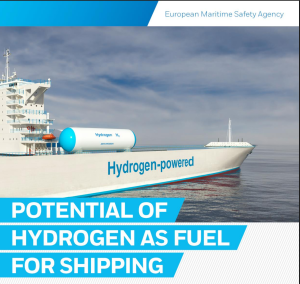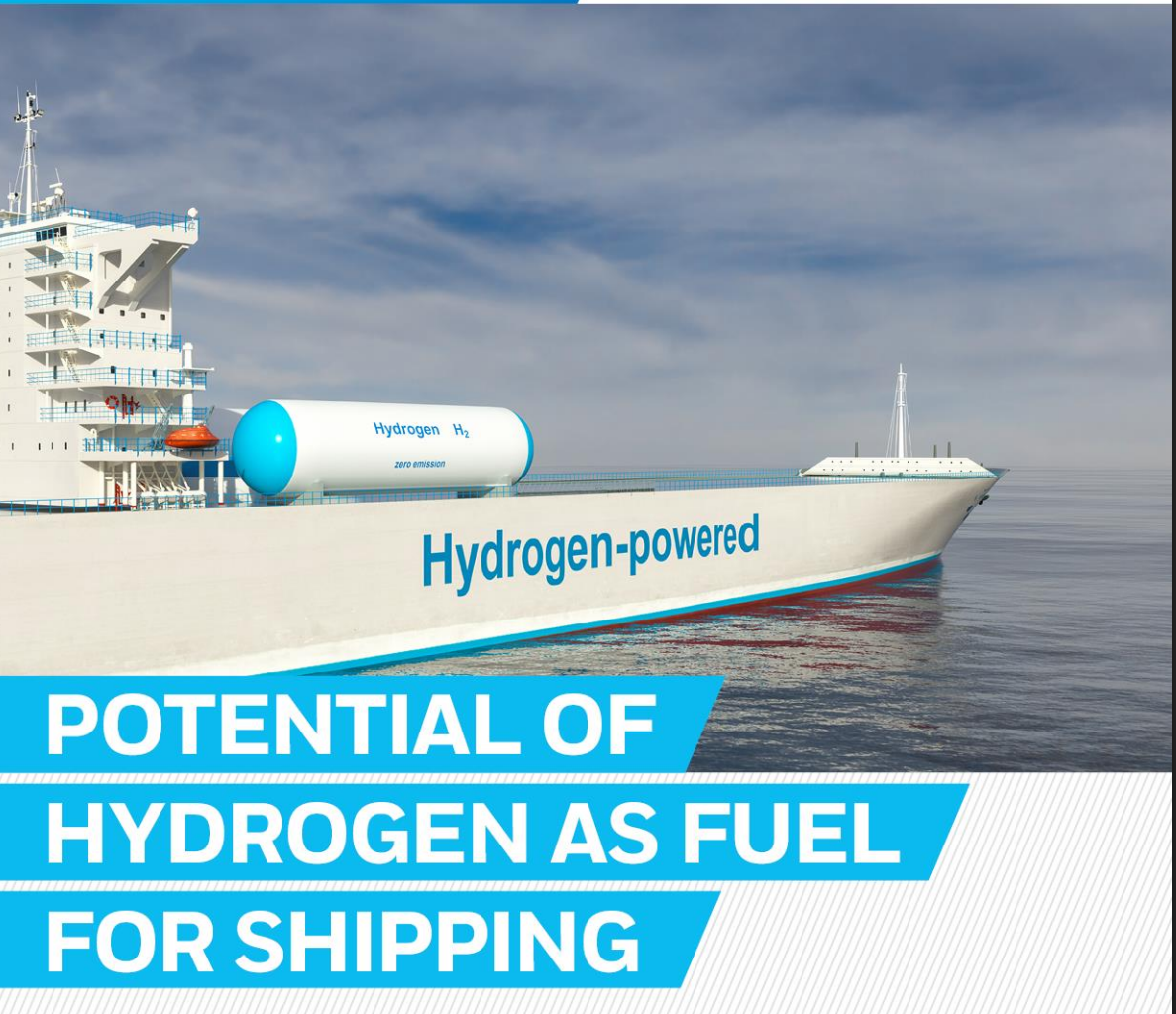07/24/2025
Discover how hydrogen cryogenic fuel handling is reshaping maritime safety and ship design. Learn key risks, technologies, real-world practices, and IMO compliance in this in-depth guide.
Why Cryogenic Fuel Safety Matters in Hydrogen Shipping
Hydrogen is hailed as the fuel of the future. With zero carbon emissions at the point of use and an energy density per mass almost three times that of diesel, hydrogen seems poised to revolutionize maritime transport. But with great potential comes equally great responsibility.
When liquefied, hydrogen becomes a cryogenic fuel, stored at around -253°C. This extremely low temperature presents new challenges that go far beyond traditional marine fuel handling. The risks range from severe frostbite to explosive gas leaks, material embrittlement, and complex fire scenarios. These dangers aren’t theoretical; they are critical operational issues for engineers, seafarers, port authorities, and regulators.
The International Maritime Organization (IMO), through interim guidelines (MSC.1/Circ.1647), has acknowledged these hazards and introduced preliminary safety frameworks for hydrogen fuel systems onboard. Yet, given the relatively early stage of hydrogen ship adoption, especially for liquefied hydrogen (LH2), there’s much more to learn, regulate, and standardize.

The Cryogenic Nature of Hydrogen: Not Just Another Fuel
Hydrogen can be stored in several forms: compressed gas, liquid (cryogenic), or bound in chemical carriers like ammonia. Of these, cryogenic storage offers the highest volumetric efficiency—crucial for space-constrained maritime vessels.
However, liquid hydrogen must be kept at ultra-low temperatures. That means double-walled, vacuum-insulated tanks, cryogenic piping, boil-off gas (BOG) management, and precise fuel supply systems. Even minor temperature increases can result in evaporation and pressure spikes. The complexity of this infrastructure increases the risk of incidents, especially during bunkering, transit, or maintenance.
Furthermore, hydrogen molecules are tiny—the smallest of all elements. This makes them prone to leakage through even the smallest gaps, and once leaked, they mix readily with air to form explosive mixtures in concentrations as low as 4%.
Key Risks in Cryogenic Hydrogen Handling
Thermal Risks and Human Safety
Cryogenic temperatures can cause immediate frostbite or cold burns upon contact with human skin. Accidental exposure to liquid hydrogen or its vapor requires emergency treatment protocols and protective gear. The IMO Model Course 7.01 now includes guidance on cryogenic PPE (Personal Protective Equipment), which is mandatory under STCW amendments for alternative fuel handling.
Material Embrittlement
Many traditional shipbuilding materials become brittle at cryogenic temperatures. Carbon steel, for example, may crack or fail under stress when exposed to liquid hydrogen. Instead, materials like Invar, stainless steel (grades 304L or 316L), or specially treated aluminum alloys are preferred. This has direct implications on ship design, construction cost, and classification approvals.
Flammability and Explosion Risk
Hydrogen has an ignition energy ten times lower than diesel. It can ignite via static electricity, hot surfaces, or even sunlight. In enclosed or semi-enclosed spaces onboard, this poses a high explosion risk.
In 2022, the DNV published guidelines for explosion risk assessment in hydrogen vessels, recommending gas detection zones, double containment, and integrated ventilation systems. The IACS UR E27 also sets safety standards for electrical installations in hazardous hydrogen zones.
Bunkering Hazards
Hydrogen bunkering—especially cryogenic bunkering—requires specialized protocols. The European Maritime Safety Agency (EMSA) published a 2023 report highlighting the need for:
- Dockside spill containment
- Remote emergency shutdown systems
- Independent leak detection sensors
Some ports are trialing robotic arms and automated hose couplings to minimize human exposure during bunkering.
Boil-off Gas (BOG) Management
Even with perfect insulation, cryogenic hydrogen evaporates over time. This results in “boil-off gas,” which increases tank pressure. If not safely managed, it can lead to venting (gas release into the atmosphere) or, in worst cases, rupture.
Modern ships use BOG management systems that either burn off excess gas in auxiliary engines or re-liquefy it using cryo-coolers. Wärtsilä and MAN Energy Solutions are actively developing dual-fuel engines that can integrate BOG use efficiently.
Real-World Examples: Progress, Practice, and Lessons
Suiso Frontier: The First LH2 Carrier
Mitsui O.S.K. Lines (MOL) and Kawasaki Heavy Industries launched the Suiso Frontier in 2021—the world’s first liquefied hydrogen carrier. Designed to transport LH2 from Australia to Japan, this vessel represents a landmark in hydrogen maritime innovation.
The ship includes:
- A 1,250 m³ LH2 vacuum-insulated tank
- Boil-off gas re-liquefaction system
- Explosion-proof bridge and control rooms
- Remote surveillance of gas sensors
While no major incidents have been reported, the ship’s trials emphasized how minor insulation faults can amplify risk, prompting continual monitoring and iterative safety reviews.
MF Hydra: World’s First Hydrogen Ferry
Operated by Norled in Norway, MF Hydra began operation in 2023 using compressed hydrogen fuel cells. Though it doesn’t use cryogenic hydrogen, its regulatory approval process set key precedents for future LH2 vessels, particularly concerning:
- Firefighting procedures
- Training requirements
- Crew response to gas detection alarms
Port of Rotterdam Hydrogen Bunkering Pilot
In 2024, the Port of Rotterdam, in collaboration with Shell and DNV, piloted cryogenic hydrogen bunkering operations. The key finding: automated monitoring systems reduced human error by 73%, but full-scale commercial adoption would require at least 12 more international terminals with LH2-ready infrastructure.
Solutions and Best Practices
Crew Training and Certification
Handling LH2 demands a new skillset. The IMO has proposed additions to STCW Code Part A to include advanced cryogenic handling modules. Maritime academies in Norway, South Korea, and the Netherlands are already incorporating simulators for hydrogen emergencies.
The Nautical Institute has emphasized the use of real-world drills and virtual reality (VR) simulations to train crews on:
- Leak detection
- Evacuation protocols
- Tank pressure stabilization
Ship Design Adaptations
- Tank placement: Preferably above deck with blast walls
- Ventilation: Natural and forced ventilation in gas zones
- Redundancy: Backup power for gas monitoring and BOG systems
Bureau Veritas (BV) and Lloyd’s Register have both issued class notations for hydrogen-capable vessels, covering structural reinforcement, materials testing, and fire integrity zoning.
Port and Terminal Readiness
For hydrogen bunkering to become mainstream, port facilities must evolve. According to the International Association of Ports and Harbors (IAPH), this includes:
- Hydrogen-safe loading arms
- Emergency isolation valves
- Fireproof concrete bunkering pads
- Cryo-resistant PPE supply stations
The Port of Singapore and the Port of Hamburg have already begun building modular LH2 storage bunkers to support green shipping corridors.
Future Outlook for Hydrogen and Cryogenic Safety
The next five years will be crucial. According to the World Bank’s 2023 “Decarbonizing Maritime Transport” report, over 200 hydrogen-powered ships could be in operation by 2030, with 15% relying on cryogenic LH2.
Key developments to watch include:
- IMO Code for Hydrogen Fuels (expected by 2027)
- EU Alternative Fuels Infrastructure Regulation (AFIR)
- Green shipping corridors linking Japan, Europe, and Australia
- Wärtsilä’s 4-stroke LH2 dual-fuel engine (prototype testing 2025)
As hydrogen matures from pilot projects to commercial fleets, safety will define its success as much as technology or economics.
FAQ: Understanding Cryogenic Hydrogen Risks on Ships
What is the biggest safety concern with cryogenic hydrogen? The biggest concern is uncontrolled boil-off or gas leaks, which can lead to fire or explosion.
Can traditional ships be retrofitted for hydrogen? Only with major redesigns, especially for cryogenic systems. Most retrofits are economically feasible only for newbuilds or hybrid conversions.
How do ships manage boil-off gas (BOG)? BOG is either used in propulsion systems or re-liquefied onboard using cryogenic compressors.
What PPE is needed for cryogenic fuel handling? Specialized gloves, face shields, aprons, and thermal-resistant suits designed for -250°C environments.
Is hydrogen safer than LNG? Not necessarily. While hydrogen dissipates faster in open air, it is more flammable and harder to detect without advanced sensors.
Do ports support hydrogen bunkering? A few do, including Rotterdam, Singapore, and Kobe, but global infrastructure is still emerging.
Are there international regulations in place? Interim guidelines exist (IMO MSC.1/Circ.1647), with more comprehensive codes under development for 2027.
Conclusion: Staying Ahead of the Curve
Hydrogen holds immense promise for zero-emission shipping, but cryogenic handling introduces a spectrum of new risks. From embrittlement and thermal hazards to boil-off and bunkering dangers, these challenges demand a systemic approach across ship design, crew training, port infrastructure, and regulation.
As the maritime world transitions to cleaner fuels, understanding and managing these risks isn’t optional—it’s essential. Through collaboration among shipbuilders, port authorities, classification societies, and regulators, hydrogen-powered ships can become not just possible, but safe, scalable, and sustainable.
References
- IMO MSC.1/Circ.1647 Interim Guidelines
- DNV Hydrogen Safety Guidelines
- EMSA Alternative Fuel Report 2023
- World Bank Maritime Decarbonization Report
- Wärtsilä Hydrogen Solutions
- Bureau Veritas Hydrogen Class Rules
- IAPH Green Ports Program
- Norled MF Hydra Hydrogen Ferry
- Suiso Frontier LH2 Carrier
- Port of Rotterdam Hydrogen Initiatives
- The Nautical Institute Training Resources
- Lloyd’s Register Hydrogen Guidance

